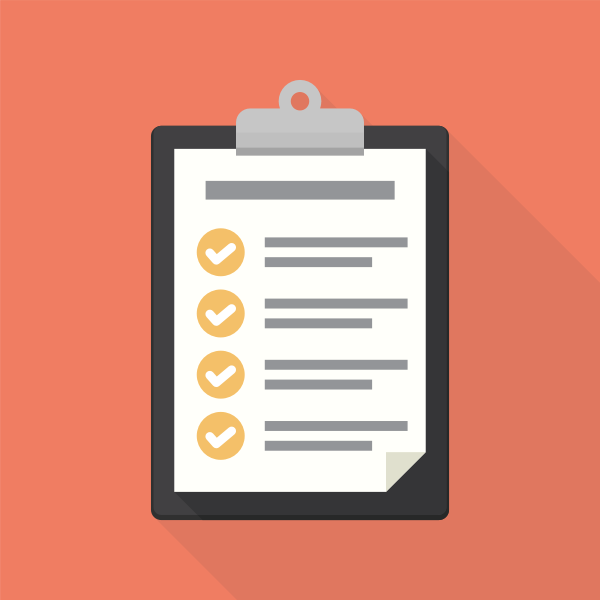
Your new website has been designed, the pages have been built, and the finishing touches have been completed. Time to launch, right? Not so fast! There’s one more step: the website review.
Before you launch your website, a thorough review for quality assurance (QA) is a must. The QA process might not be particularly fun, but it directly impacts the success of your website. Without a review, it’s possible your site could be launched with broken functionality, missing content, or other errors that might negatively impact the user experience.
Read on to find out what makes a pre-launch review essential to your website’s success, how to plan for a successful QA process, and the most critical items to include in your review checklist.
Before you launch your website, a thorough review for quality assurance (QA) is a must. The QA process might not be particularly fun, but it directly impacts the success of your website. Without a review, it’s possible your site could be launched with broken functionality, missing content, or other errors that might negatively impact the user experience.
Read on to find out what makes a pre-launch review essential to your website’s success, how to plan for a successful QA process, and the most critical items to include in your review checklist.
Why conduct a QA review?
Assessing your website as a whole is beneficial. When you are building a website, you’re typically focused on specific sections of it at a time. After it all comes together, it’s helpful to take a step back and analyze the overall flow of your website. Reviewing it with your audience’s perspective in mind will help to ensure you’re providing a positive user experience.It saves time and effort in the long run. Identifying issues before website launch prevent rework later to make fixes on the live site. It’s typically easier and more cost effective to make changes while still in the development phase.
Errors can cost leads. If you launch your website with functionality errors or broken links that weren’t caught in a review process, this could potentially impact a user’s ability to complete the desired actions on your website. For example, if a form isn’t functioning correctly, you will miss out on those potential leads who are unable to submit information.
The quality of your website impacts your brand. Not only do errors interfere with lead generation, but they also affect how your business is perceived by users. Your site is an extension of your brand, and if your website doesn’t function properly, users may develop a negative view of your business. Remember—details matter.

Download the Website Launch Checklist. Make sure your launch process goes smoothly by using this list of crucial final steps.
Download now
Download now
Tips for review
A website review can be a daunting task, especially if you have a large website. Consider the following tips for conducting an organized and efficient review:- Plan enough time. If you get to the end of the project and only leave a day or two for your review, you’re likely to run into trouble. Block off a realistic amount of time to not only review, but to fix any issues that arise as a result. Typically, a review will need at least 1-2 weeks to complete, and likely more for large or complex websites.
- Assign multiple reviewers. It’s helpful to engage multiple people in your QA process to both speed up the process and to have a better chance of catching all errors. A fresh set of eyes on the website can help pinpoint issues that may have slipped through other phases of the project.
- Stay organized. Create a checklist and have a clear review plan for your reviewers. Consider setting up a page-by-page spreadsheet to keep track of changes for your team. This will make sure everyone is on the same page and will prevent unnecessary overlap.
- Have a plan for after the review. Once the review is complete, consider how you will go about prioritizing any changes needed and who will be responsible for their completion. You don’t want to hold up the website launch by letting review action items linger!
What to look for when reviewing
It’s easy to forget all of the little items you should be checking for when wrapping up a website project, so a checklist is a must-have. To help you get started, check out the following list of the most essential items we look for in a pre-launch website review.Content
- Test all links and make sure they are going to the right URL. Consider using an online tool such as Broken Link Checker to double check for broken links.
- Review all content for spelling or grammatical errors.
- Check that metadata (e.g., page title and description) is accurate and optimized adequately for all pages.
Design & Images
- Compare pages to any original designs to ensure styles match up and have been used appropriately.
- Check that images have been compressed/optimized and have ALT values added.
- Make sure any stock placeholder photos have been replaced with the purchased versions.
- Check that a favicon has been added.
Functionality
- Review for broken or missing functionality. Test all user actions such as logins, transactions, or any other custom components.
- Test that all forms are working and sending to the correct recipients.
- If you’ve added social media sharing, test that the right information is pulling through when your content is shared (photo, title, description).
- Check that any system pages have been set up correctly, such as 404 errors or search pages.
- Test analytics and any other tracking codes to confirm they have been appropriately set up.
- Double check any other third-party integrations to make sure they are functioning as intended.
Testing
- Review your website on mobile devices to check for proper optimization and usability.
- Conduct a cross-browser check to identify any issues that might be browser-specific.
- Test the overall speed and performance of your website.
Ready to revamp your website? Start here
You might also like:
